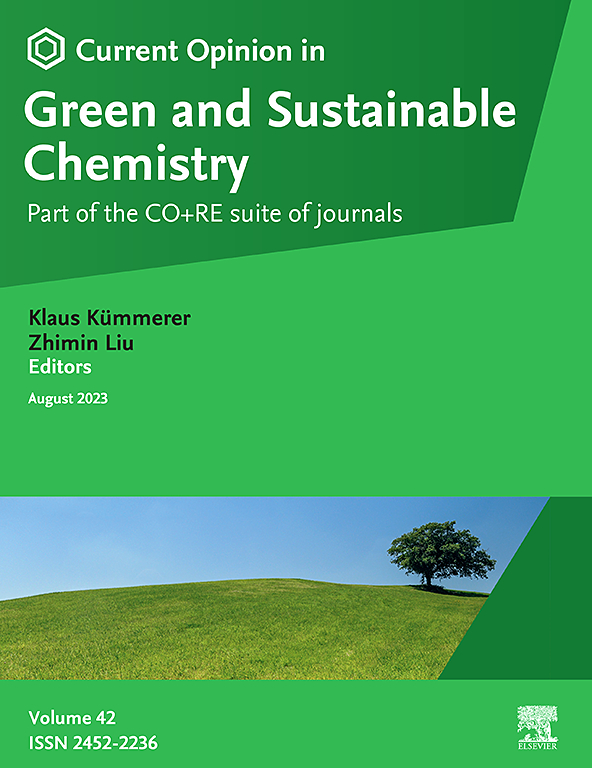Microplastic pollution and e-waste: Unraveling sources, mechanisms, and impacts across environments
IF 9.3
2区 化学
Q1 CHEMISTRY, MULTIDISCIPLINARY
Current Opinion in Green and Sustainable Chemistry
Pub Date : 2024-02-08
DOI:10.1016/j.cogsc.2024.100891
引用次数: 0
Abstract
Since the 1950s, usage of plastic's ubiquity and durability have fostered significant microplastic pollution, set to double in oceans by 2030. Originating from diverse sources including product wear, waste, and now identified e-waste recycling, these particles traverse to marine ecosystems, accumulating and causing ecological harm. Measuring less than 20 μm, microplastics can penetrate cell membranes, posing risks to animal and human health. Confronting this challenge demands improved detection, comprehensive understanding of behaviors, enhanced hazard assessment, and recognizing e-waste's contribution. Mitigation hinges on global pollution management, innovative sustainable materials, and reducing plastic and electronic waste dependency.
微塑料污染和电子垃圾:揭示各种环境的来源、机制和影响
自 20 世纪 50 年代以来,塑料的普遍性和耐久性造成了严重的微塑料污染,到 2030 年,海洋中的微塑料污染将增加一倍。这些微粒的来源多种多样,包括产品磨损、废弃物,以及现在已经确定的电子垃圾回收,它们进入海洋生态系统,不断累积,对生态造成危害。微塑料的尺寸小于 20 μm,可以穿透细胞膜,对动物和人类健康构成风险。面对这一挑战,需要改进检测、全面了解行为、加强危害评估,并认识到电子垃圾的贡献。缓解措施取决于全球污染管理、创新型可持续材料以及减少对塑料和电子废物的依赖。
本文章由计算机程序翻译,如有差异,请以英文原文为准。
求助全文
约1分钟内获得全文
求助全文
来源期刊

Current Opinion in Green and Sustainable Chemistry
Chemical Engineering-Catalysis
CiteScore
16.00
自引率
2.20%
发文量
140
审稿时长
103 days
期刊介绍:
The Current Opinion journals address the challenge specialists face in keeping up with the expanding information in their fields. In Current Opinion in Green and Sustainable Chemistry, experts present views on recent advances in a clear and readable form. The journal also provides evaluations of the most noteworthy papers, annotated by experts, from the extensive pool of original publications in Green and Sustainable Chemistry.
 求助内容:
求助内容: 应助结果提醒方式:
应助结果提醒方式:


